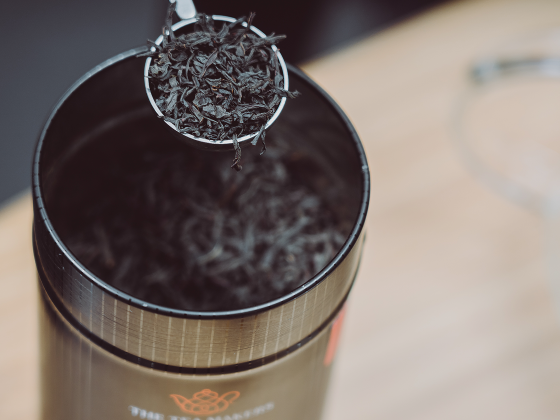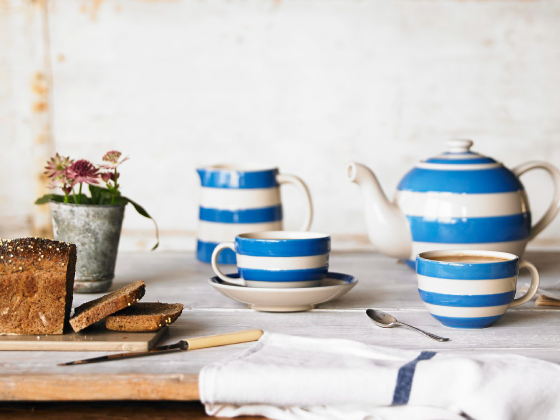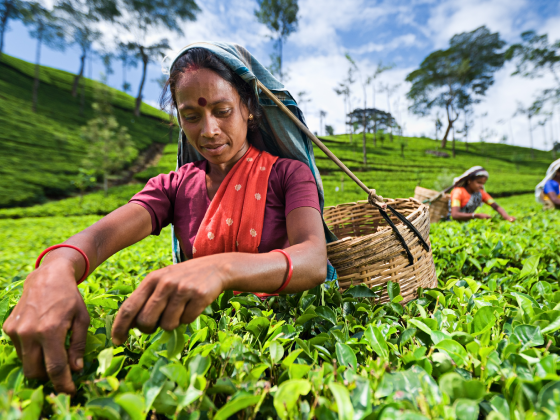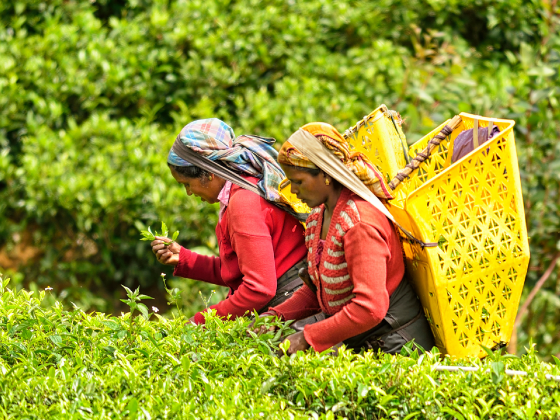What is Assam Tea, and where does it come from?
Like all oxidised black teas, the Assam tea variety is grown from an evergreen shrub named Camellia sinensis. The Assamica plant variety, which all Assam tea belongs to, sits either side of the Brahmaputra valley river in Northern India, in between Bhutan, Bangladesh and Myanmar with water carried down from the Himalayas. In this region, which accounts for over 50% of India’s total annual production of tea leaves and is the largest in the world, the tropical monsoon climate varies harshly between a 35 - 38 °C humid Summer, and a cold and very rainy 6 - 38 °C in Winter.
There are three key harvesting seasons in Assam. The first flush harvest usually take place from mid-March to early May. The first flush harvest offer a lighter infusion and subtle floral notes. Followed my the second flush harvesting that starts from mid-May to August. Teas produced using the second flush offer a well rounded cup, with deep amber red, full bodies strength and distinctive malty and robust flavour, which is the hallmark of a great breakfast tea. Third flush starts in late autumn between October and November and these tea are dark in colour however, lacks in strength or flavour.
Despite the Assam region being very close to the highland tea growing regions of Derjeeline and Nigri, they are very different in taste, character and mouthfeel. Assam is gifted with varieties of flora and auna as the region is a biodiverse hotstop with dense tropical forest, nature reservesm wetland eco-systems and diverse wildlife including the tigers and rare indian rhinocerous. The geography and tropical climate of the Assam region contribute to the unique characteristics of this tea with a firm, malty taste and depth, with typically higher caffeine content, that Assam Black Tea is famed for. As a result, mostly Assam tea form the base of a good breakfast tea.
How to brew Assam tea
To experience the full depth and flavours of Assam tea, we recommend that you use freshly filtered water and a good quality clean kettle, or teapot capable of reaching a true 100o Celsius (212o Fahrenheit).
For those who are brewing with tea bags, you need nothing more than your teabag and a spoon. However, for those who wish to brew traditionally with loose leaf, we recommend using a glass teapot or infuser mug that can filter out the leaves at the end of the brewing process. We have a range of glass products here that does not absorb tannins and looks beautiful here.
1) Take 3-4grams, about 1 teaspoon, of Assam loose leaf and place into your teapot or infuser mug. Add more or less to taste, depending on strength. Alternatively, place your teabag in your mug.
2) Boil your filtered water in your kettle or stovetop teapot to 100o Celsius (212o Fahrenheit). Pour 200ml of the freshly boiled water onto the tea leaves or teabag.
3) Leave the tea leaves to steep and infuse into the water, between 4 and 5 minutes, but no longer otherwise the tannins will yield a bitter and harsh taste.
Remove the tea leaves by straining from the infusion, or remove the teabag being careful not to squash or crush the teabag.
4) Add 1 or 2 teaspoons of white sugar, or a sweetener, to taste. Or add a non-dairy milk for the tea.
5) Finally, if preferred, carefully add a little milk (no more than 25ml). Gently stirring whilst pouring.
6) Enjoy!
The taste of Assam tea and when it is traditionally best to drink
When most of us think of a black tea, the robust flavours able to hold their own amongst milk and sugar are the deep burnt caramel aroma, slight astringency on the back of the palate combined with a sumptuous, wholesome mouth feel is what comes to mind. After all, Assam is the main ingredient in most of the breakfast teas, including English Breakfast and Irish Breakfast, commonly drunk by the British public. However, how can this vary?
Assam teas are not known for their delicate, nuanced floral or citrus notes such as how green tea might, so, for the most part, the infusion retains brisk, strong character with woody, caramel notes. How the tea can vary in flavour is if the Assam tea features larger leaves, young ‘golden tips’ leaves, or picked as part of the much sought after the second flush. When you taste an Assam black tea at home, you can use our flavour wheel below to help you describe the complex smell and tasting notes. Generally, you will experirince the strong characteristics of the earthy, spicy, caramel and sweet flavour descriptives.
Our selection of Assam teas represent the very best of the harvest and region, from the staple Assam Breakfast tea to the rich with golden tips, Assam Mangalam.
Discover the individual tastes and flavours within our pages for: Assam Breakfast, Meleng Second Flush, Manjushree Tea Garden, Assam Mangalam or Golden Valley Assam
Medicinal benefits
The medicinal benefits of black tea have widely been discussed and theorised, with some links cited between the rich polyphenolic compounds said to boost immunity and heart health via a probiotic effect and action upon cholesterol, or the theaflavins which can potentially inhibit the effect of certain enzymes on the brain. Either way, for most, the medicinal benefits will be in the form of a caffeine boost, which is said to be higher in the Assam variety, which can stimulate the heart and brain.










